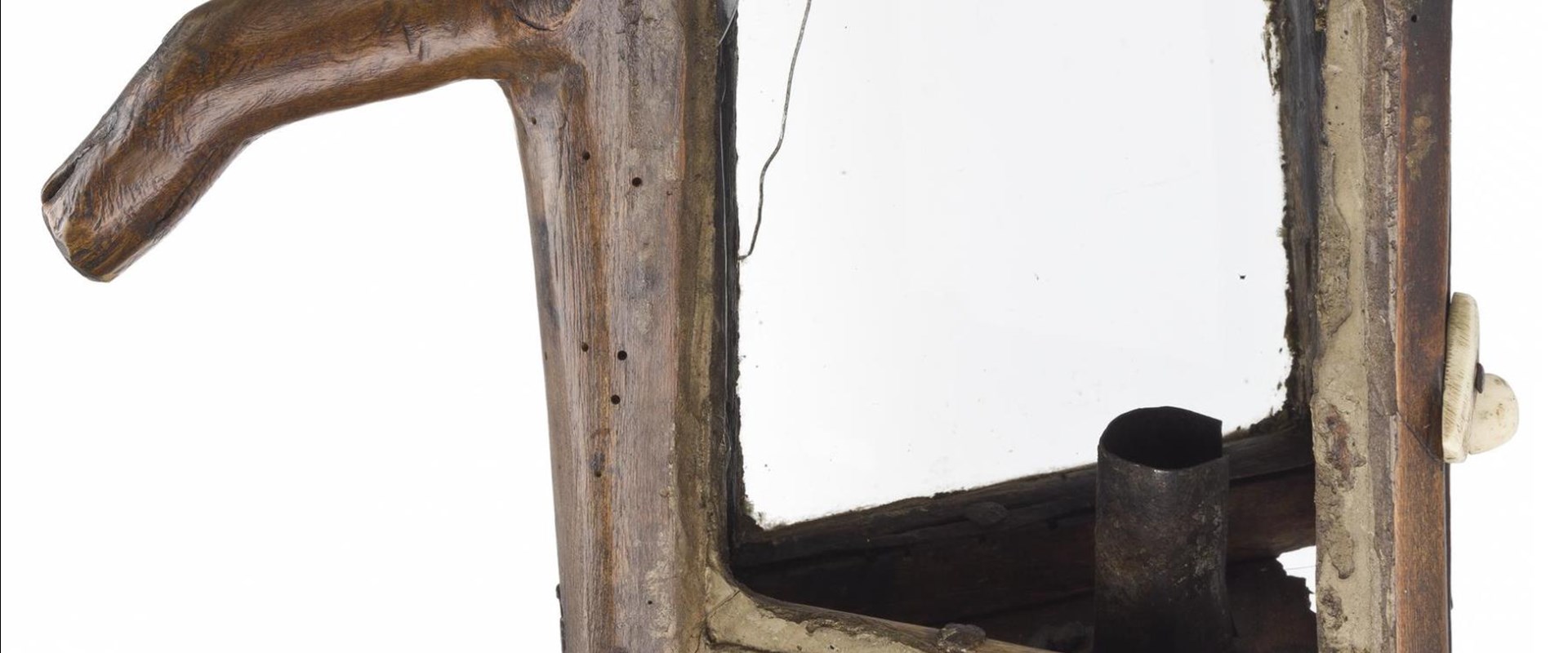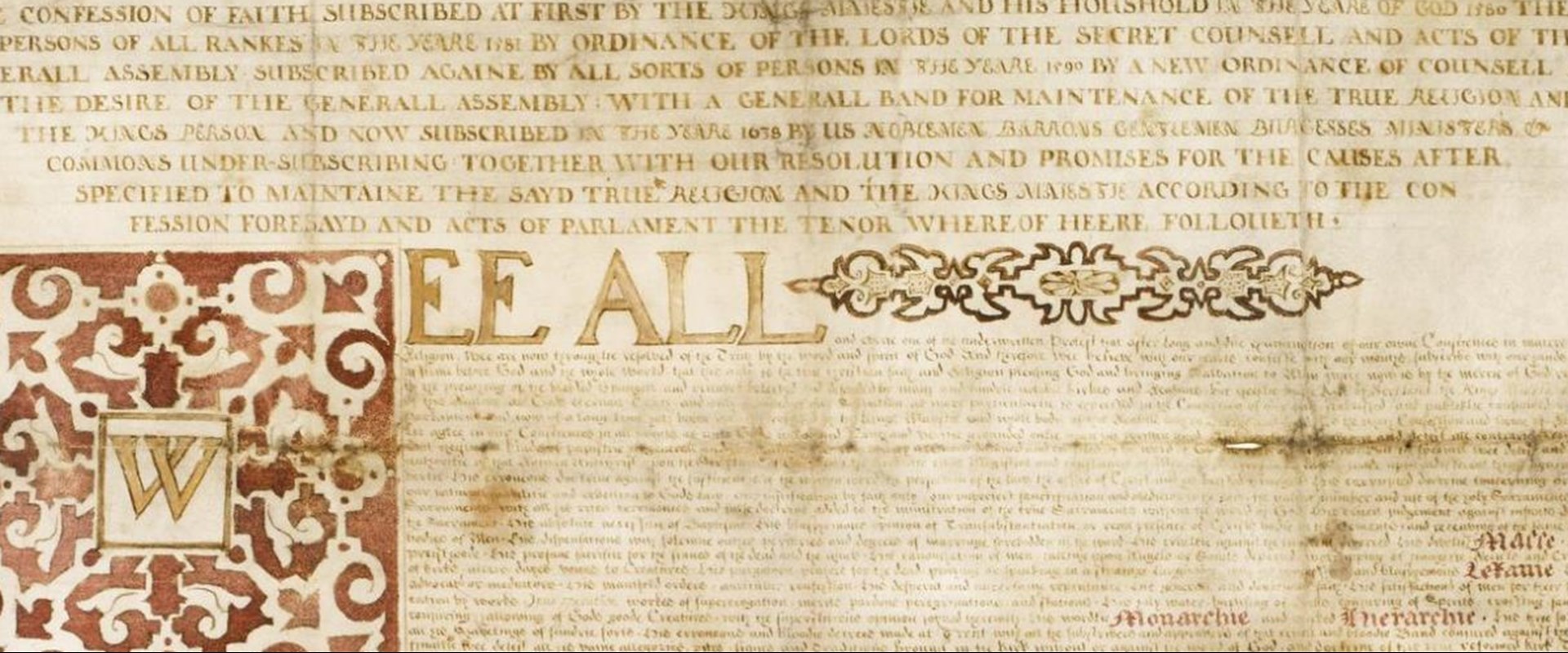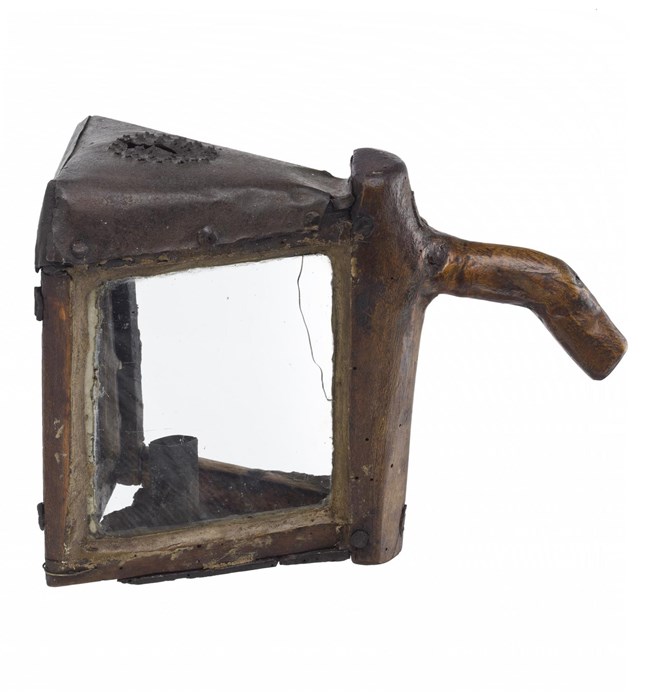Key in a search term below to search our website.
Key in a search term below to search our website.

This lantern was said to have been carried by Lady Grisell Baillie, Scottish songwriter, on her nightly visits to her Covenanter father during his concealment in 1684.
Date
17th century
Made from
Wood, tin, ivory and leather
Dimensions
190 mm H x 164 mm W
Museum reference
H.MGK 7
On display
Scotland Galleries, Level 1, National Museum of Scotland
Did you know?
It's possible that "taiblet for the bairens" in 'The Household Book of Lady Grisell Baillie' is the first reference to tablet, a sugary confection from Scotland
The Covenanters were Scottish Presbyterians who called for Scots to subscribe to a document known as the National Covenant. This was signed to demonstrate their opposition to the Anglican religious policies of King Charles I.
The National Covenant was first signed on 28 February 1638 in Greyfriars Kirk, which is opposite the National Museum of Scotland. It was then copied so that every burgh and parish could subscribe to it. Several copies are on display in the Museum.
Lady Grisell Baillie of Mellerstain was born into an aristocratic family in Berwickshire and her father, Sir Patrick Hume, was a Covenanter. The struggle between the government and those who continued the Covenanting cause progressed throughout the seventeenth century, including the time that Grisell is said to have carried this lantern when visiting her father in hiding.

National Covenant on vellum with a painted border, bearing the signatures of members of the Scottish Privy Council, 1638
At the age of twelve, she smuggled letters "of advice and information" from her father to the imprisoned Robert Baillie of Jerviswood, who was implicated in a plot against King Charles II. Her father publicly defended Baillie and was forced into hiding in 1684. He chose a vault beneath Polwarth Church near Edinburgh, a mile from their house.
According to Lady Grisell's daughter, Lady Murray of Stanhope, he was concealed for a month and “she went every night by herself, at midnight, to carry him victuals and drink, an staid with him as long as she could to get home before day.”
Lady Grisell "stumbled over the graves every night alone, without fear of any kind entering her thoughts, but for soldiers, and parties in search of him, which the last noise or motion of a leaf put her in terror for."
The lantern she reputedly carried on these visits is now on display at the National Museum of Scotland. It has a wooden frame and base, tin candle holder, ivory clasp and leather hinges.

“She was unwearied and indefatigable in business; understood it well, and had the whole load of her own affairs, as well as that of many of her friends.- Memoirs of Lady Murray of Stanhope, 1822
Lady Grisell is also known for her domestic account books and songs. The Household Book of Lady Grisell Baillie 1692-1733 paints a vivid picture of social life at the time. She detailed the organisation of her household, including all the expenditures of the family as well as her own recipes. Her records show that the family was adopting new ideas on the estate and at home.
Her daughter had a "book of songs of her writing when there; many of them interrupted, half writ, some broke off in the middle of a sentence." Only two of these survived, including the popular “Werena my Heart’s licht I wad dee”, which was published in a collection of Scottish folk song in 1725.
Baillie, Grizel. ‘The Household Book of Lady Grisell Baillie (1692–1733), edited with notes and introduction by Robert Scott-Moncrieff.’ University Press, 1911.
Murray, G. ‘Memoirs Of The Lives And Characters Of The Right Honourable George Baillie Of Jerviswood, And Of Lady Grisell Baillie. By Their Daughter Lady Murray Of Stanhope’. Pillans, 1822, pp. 36-38, 49-50.